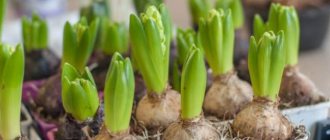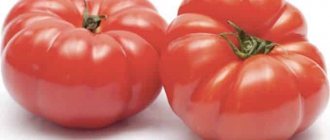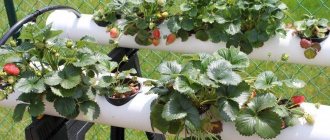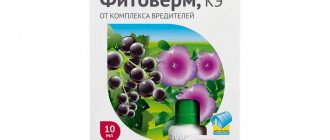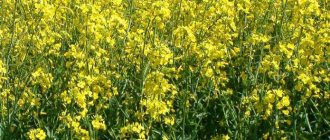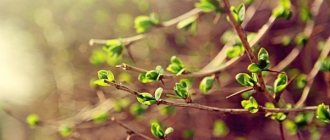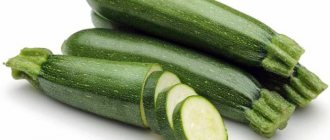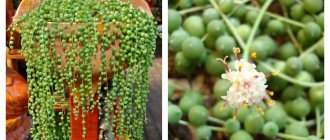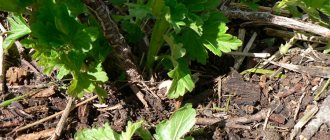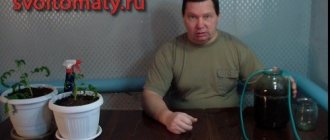Many gardeners can successfully grow garden trees and other plant crops. But it is not always possible to propagate them by seeds. Therefore, you can use a cutting for this purpose. This is the name of the part of the plant with which it reproduces vegetatively. Unlike seed, it is good in that the varietal qualities of the crop will not be subsequently lost.
Which cuttings root easily?
Green cuttings of perennials and herbaceous shrubs take root best; plants of tree species, especially conifers, take root worse.
Here are plants that are literally made for cuttings:
- phlox;
- chrysanthemums;
- grapes and almost all vines;
- action;
- spirea;
- vesicular carp;
- weigela;
- dogwood;
- plum;
- currant;
- forsythia;
- mock orange;
- viburnum;
- hydrangea;
- all types of honeysuckle;
- some types of lilac;
- actinidia;
- small leaf roses.
Green cuttings: technique
The green stalk is the part of the stem with leaves. It is more correct to cut them from young plants; if you want to propagate old ones, then you will have to do rejuvenating pruning. The best cuttings are obtained from last year's growths. It is not recommended to take trailing shoots for cuttings; they do not take root well.
Sodmaster Agronomist, FORUMHOUSE member
Green cuttings are planted for rooting either in a greenhouse equipped with “artificial fog” or in a “cutting box”.
An ordinary glass jar can be a full-fledged cutting; you just need to cover the top of the cutting planted in the ground with it.
Each crop has its own timing of cuttings. For example, agronomists recommend cutting cherries at the beginning of summer, because herbaceous, young cuttings take root much better, and currants can be cut in August using semi-lignified cuttings.
A member of our portal, Irena, has been successfully cutting plants for many years using this method:
- Cuts cuttings with a budding knife.
- Immediately drops them into a prepared jar with water and a drop of Epin.
- Under the same bush from which the cutting was taken, loosens the soil.
- The cuttings are taken out of the jar one by one, and the lower end is dipped in Konevin.
- Sticks the cutting into the ground, covers it with a glass jar or plastic bottle.
Irena Member of FORUMHOUSE
I cut cuttings with 2-3 internodes, the bottom cut is oblique, the top is straight. It is better to replant to a permanent place in the spring of next year, but some plants can be done as early as September.
General rules for cuttings from indoor plants
There are very few general rules for cuttings:
- It is necessary to adhere to the recommendations for propagation for each individual species, choosing the optimal method and type of cuttings for it.
- Only healthy plants can be cut from cuttings.
- When working with cuttings, it is important to adhere to hygiene and be careful. Mandatory conditions: sharp, clean tools, a prepared work area, disinfected containers, cleanliness of all materials and minimal trauma to plant tissue.
Methods for rooting cuttings depend on the plant itself. Easy-to-propagate crops, such as spathiphyllum or tradescantia, easily take root even in water. The classic method of rooting is in the soil.
Let's take a closer look at the features of cuttings from indoor plants, which determine cutting, choice of “material” and its rooting.
How to cut green cuttings
Our task is to achieve successful rooting of cuttings, and we will make it much easier for ourselves if we adhere to a number of rules. So, if you cut the cuttings early in the morning, they will be saturated with moisture; If you start cuttings by first preparing a container with water and immediately placing the cut cuttings in it, this will help avoid drying out. The cuttings may have to be transported to another place - in this case, they are placed at an angle in a container with damp sphagnum; there is no need to spray the cuttings with water. In a container with sphagnum moss, cuttings can even be stored in the refrigerator, but for a maximum of two days.
The length of the cutting should be 8-12 centimeters, each cutting should contain 2-3 internodes, if the internodes are short, then more. There are plants (lilac, mock orange, roses, grapes) in which leaf-bud cuttings, that is, a very short part of the stem with a leaf and a bud, which is located in its axil, take root best. From this bud the stem of a new plant will appear. Usually the lower part of the shoot is used for cuttings, but if the optimal timing of cuttings is missed and summer is coming to an end, you can also take the upper part.
The tool used to cut the cuttings should be as sharp as possible so as not to squeeze the shoot tissue.
The lower, oblique cut of the cutting is made 1-1.5 centimeters below the bud, and the upper, horizontal one, immediately above the bud. An oblique lower cut helps the cutting to better absorb moisture.
Propagation by leaf cuttings
For stemless plants or plants that form leafy rosettes, only leaves or leaf fragments can be used for cuttings.
- Photo lesson - from cuttings to violet flowering
- Basic rules for propagating azaleas
You can achieve success with plants such as begonia with decorative leaves, including royal begonia, peperomia, gloxinia, saintpaulia, crassula, steptocarpus, sedum, sansevieria, etc. Begonia and sansevieria can be propagated even with pieces of leaves. Bromeliads do not root this way.
There are two types of leaf cuttings: cuttings from whole leaves and cuttings of leaf fragments. Cuttings from whole leaves. The petiole of a whole leaf is vertically stuck into the substrate: Saintpaulia, peperomia, pilea, succulents... The roots begin to grow from the junction of the leaf and the petiole. In the leaves of many begonias and streptocarpus hybrids, the veins are first lightly cut with a razor or a sharp knife and placed on the substrate, veins down. Young plants will appear where the cuts are made.
Select young, well-developed and healthy leaves, cut off the petiole at the very base with a sharp knife, then cut again 3-4 cm from the leaf blade. Dip the petiole of plants that are not too tender or velvety in hormonal powder using a fungicide, fill the bowl with substrate for young plants, adding 20% vermiculite or perlite to give it lightness. Use a pencil or stick to make a hole in the substrate and lower the petiole into it at a slight angle so that the base of the leaf lies on the substrate. Moisten the substrate, but do not wet the leaves, so as not to provoke the appearance of rot. Place the bowl in a mini-greenhouse, preferably heated to 25 degrees. This is the ideal temperature for roots to appear. The petioles should be placed in a light place for several weeks, but protected from sunlight, until young plants appear at the base of the leaves. Always take several leaf cuttings as not all of them will survive.
As already mentioned, decorative leaf begonias can be propagated by one single leaf. To do this, the leaf petiole is buried in the substrate, leaving a leaf blade on its surface. To get several plants, cut the veins from the underside and, securing the position of the leaf with pebbles, place it on the substrate.
Techniques to improve rooting
Cuttings will take root better if, 2-3 weeks before cutting, they are darkened and the part of the shoot that will be immersed in sand is wrapped in foil or non-woven material. This method is called etiolation. It is used, for example, when cutting lilacs and other crops with poorly rooted cuttings.
Sodmaster
As my friend, a candidate of agricultural sciences, said, the cuttings think that they have already taken root and give new roots.
Fig1. Before growth begins, the shoot area is darkened.
Fig2. The base of the shoot is tied.
Fig3. The cutting “thinks” that it is already planted and forms roots in the darkened area.
If the plant has large leaves, such as viburnum or lilac, they can be cut in half on the eve of cuttings - this also contributes to better survival of the cuttings. But there is one subtlety here - many forms have insufficient chlorophyll content, and by cutting off the leaves, we will make it difficult for the cuttings to form roots. This applies to all crops with variegated, purple, yellow leaves.
It also helps cuttings to take root by bending a branch or cutting the roots 22 mm near the buds.
Correct soil temperature will significantly improve the chances of successful rooting of cuttings.
GrapeForumHouse Member
The temperature is comfortable for them - the process has begun! The heat pressed down - everything rotted...
We will tell you about the successful experience of rooting some cultures by FORUMHOUSE participants.
How to take lilac cuttings
Lilac cuttings take root quite difficult; this crop is easier to propagate by budding. However, this is possible if you cut the cuttings at a time when the lilac is just beginning to bloom, subject to high humidity and a temperature of +23-25 degrees.
Sodmaster
Some varieties (Jeanne d'Arc, Buffon, etc.) take root well. Others (for example, Beauty of Moscow) are very difficult, and most importantly, for a long time, sometimes right up to the next year after cuttings.
CARE OF CUTTINGS
90% of rooting success depends on proper care of planted cuttings of indoor plants. Caring for cuttings largely depends on the type of plant, but there are rules that are common to all.
MOISTURE CONSERVATION AND WATERING
Do you need film? It is almost always recommended to cover rooting shoots with film or glass to protect them from drying out, leaving a small hole for ventilation. For cuttings planted in cups, just put a small plastic bag on top.
This requirement is not relevant for all plants, but it won’t hurt, especially in the first days. Succulent plants, as a rule, are not covered with anything.
Important! Be sure to ventilate regularly! How often? If it’s cool, it’s enough to open it once a day for half an hour; if it’s hot and there are a lot of water droplets on the film, open it 3 times for 10-15 minutes. From excess condensation, cuttings easily rot. Frequent spraying accelerates rooting, but plants with pubescent leaves or shoots are not recommended to be sprayed.
When the first roots appear, the film can be removed. Spraying continues.
Should I trim the leaves? Cuttings of plants with large leaves evaporate a lot of moisture, and the soil dries out quickly. It is useful to cut the leaf blades of cuttings by half or 2/3. This is done with cuttings of lemons, indoor roses, hibiscus, and gardenias. Fleshy thick leaves are not shortened. They already hold moisture well, but when damaged they begin to rot.
How to water? Cuttings covered with film are watered infrequently; make sure that the soil is slightly moist. It is better to water with soft, settled water at room temperature or a few degrees warmer. When roots appear, the plant begins to absorb more moisture from the soil and evaporate more of it, watering is increased, and the cover is removed.
TEMPERATURE REGIME
Temperature is the most important factor for most plants. Chopped shoots actively develop in warm conditions. The optimal temperature is 22-28°C. Moreover, not only the air should be warm, but also the soil. In winter, even the most unpretentious plants cannot take root on cold windowsills.
Plants of the tropics require higher temperatures; many representatives of subtropics and temperate climates form roots at 20 degrees. Very heat-loving exotic species take root only with bottom heating! To do this, you can place the container with cuttings on a warm windowsill above the radiator or buy a special heated box for seedlings.
When it's very hot, that's also bad! At temperatures above 30 degrees, most cuttings die.
As soon as you notice the appearance of roots (transparent containers are very convenient in this regard) or the beginning of the growth of a new leaf, it is advisable to lower the temperature to normal room temperature.
Most websites dedicated to houseplants advise rooting cuttings in spring or late summer. These tips are correct for most species. And often the point here is not that the roots do not grow at other times. They are growing! But during these periods it is easiest to ensure the required temperature and light conditions without any special tricks.
LIGHTING
Sunlight stimulates growth. It would be a mistake to place the cuttings in the shade, where the sun practically does not penetrate. There should be a lot of light, but it should be diffused. In the summer heat, it is better not to keep them in the midday sun to prevent overheating. But the morning and pre-sunset rays will be beneficial, especially for cuttings of sun-loving species (hibiscus, gloxinia, pelargonium).
Some types of plants are rooted by cuttings without leaves (grapes, barberries); they can also be kept in a shaded place. The reason for this is that if the cutting was harvested in the fall, at a time when the plant no longer had leaves, then it contains a certain amount of heteroauxin, which stimulates the formation of roots.
How to cut girlish grapes
Cuttings of maiden grapes are cut before the sap begins to flow from young shoots (up to four years), but woody shoots take root best when they are one year old. The size of the cutting should be 25 -35 cm, and there should be 3-4 buds on it. The cuttings are planted in well-dug, light, loose soil to a depth of about 20 centimeters.
Strawberry Month FORUMHOUSE Member
I cut it with three eyes. I placed the cuttings in a jar of water. They stood there for about a month. I changed the water as needed. White convex dots, future roots, appeared on the cuttings, and in May the cuttings were buried in moist soil, in the shade. I buried it in one eye. After about a month, the cuttings took root and began to grow.
Plant propagation by cuttings
The question is often asked about how to properly propagate plants by cuttings, especially by novice gardeners.
A cutting is a useful part of a plant separated from the main part for subsequent propagation by the vegetative method.
Cuttings are a quick and effective method of propagation; in this way you can easily increase the supply of your favorite plants.
There are three main types of cuttings, each of which is taken at a specific time of year, at different stages of plant maturity. These are softwood cuttings that produce green plants, semi-lignified and lignified cuttings.
Before you get started, you need to follow some simple rules when cutting:
- Before cutting a cutting, make sure the plant is healthy and use only clean tools;
- to prevent the cuttings from drying out, protect them from direct sunlight;
- Place a plastic bag over the top of the pot to create a humid environment for the young cuttings.
Cuttings from softwood plants
Softwood plants include:
- abelia,
- cletatis,
- scumpia,
- fuchsia,
- gazania,
- immortelle,
- hydrangea,
- balsam,
- daisies,
- pelargonium,
- privet,
- cherry laurel,
- verbena,
- wisteria,
- bloodroot.
Softwood cuttings root well but die easily, so store them as above. Slice them early in the morning while it's still cool. Choose live, vigorous, non-flowering shoots with three to five pairs of leaves. It is better to cut the shoot under the internode.
The cuttings should be 7-10 cm long.
At the same time, remove the buds and tear off the lowest pair of leaves.
Cover the pot with a plastic bag - this will help maintain constant humidity and improve germination.
Place the pot in a warm, bright place, but avoid direct sunlight. Cuttings must be checked regularly and, if necessary, added moisture. When new shoots appear, the film can be removed and eventually transplanted into open ground.
Semi-lignified cuttings
Plants such as:
- barberry,
- budleya,
- camellia,
- wolfman,
- action,
- junipers.
Let's look at the example of juniper cuttings.
It is better to do this in the second half of summer - early autumn, since it is at this time that they take root better. To do this, select healthy shoots that have begun to turn brown and become woody at the base.
This is done as follows: carefully tear off the cutting from the parent plant so that a small thin strip of tree bark is formed - the “heel”.
Use a sharp, clean knife to cut the stem just below the internode so that the cuttings are approximately 7.5-15 cm long. For heeled cuttings, remove any excess branches. To reduce water loss from bushes with large leaves, cut the leaves in half.
In order to achieve rapid rooting, remove a 2 cm long strip of bark from one side of the base of the cutting (Fig. 1).
Dip the prepared cuttings into the rooting powder, shake off the excess and place them inside a 7.5cm pot filled with fresh compost for planting the seeds or cuttings, close to the edge.
Follow the instructions from step 2 onwards for softwood cuttings.
Lignified cuttings
Currants, forsythia, honeysuckle, jasmine, mock orange, willow, spirea, poplar - to propagate these plants, it is better to take lignified cuttings that have grown during the summer.
For best results, take cuttings as soon as deciduous plants lose their leaves. The stems should be healthy and pencil thick. The length is approximately 15-30 cm. To cut them, use pruning shears, cutting the shoot directly below the bud at the base of the plants and just above the bud at the top. Make the top cut at an angle so that it gets rid of water faster, thereby making it easier to determine the top of the plant.
For evergreen cuttings, remove the leaves, leaving only 3 or 4 leaves on top.
Choose a sheltered but sunny location with well-draining soil. Using a shovel, dig a narrow wedge-shaped ditch approximately 20cm deep. Fill the base of the ditch with sand, then stick the cuttings into the sand 3 inches apart, leaving one-third of each cutting above the base of the soil. Add soil to the ditch and tamp down each cutting well. Water during dry periods and remove weeds.
How to take forsythia cuttings
Semi-lignified green cuttings of forsythia are cut in June. Before planting them in wet sand, it makes sense to dip them in horseweed. Cuttings will root quickly if you keep the soil moist at all times.
Sveta2609
In May-June, you can bend the lower young branch to the ground, secure it with wire and sprinkle it with fertile soil - roots will quickly form on it, and in the spring, cut this branch from the bush. Next year flowers will appear on the new plant.
At FORUMHOUSE you can get acquainted with the experience of our users in cuttings from various plants, watch a video about winter cuttings, read an article on how to properly cut grapes.
Rooting in the ground
Plants that grow in nature in drier conditions take root very poorly in water. Therefore, in such cases, a soil mixture is used. Rooting occurs most easily in soil consisting of peat and sand. You can also use substrates such as vermiculite, perlite, or coconut briquettes separately or mixed with each other. Before planting cuttings, mandatory drainage is required. For the first watering, use some kind of fungicide.
